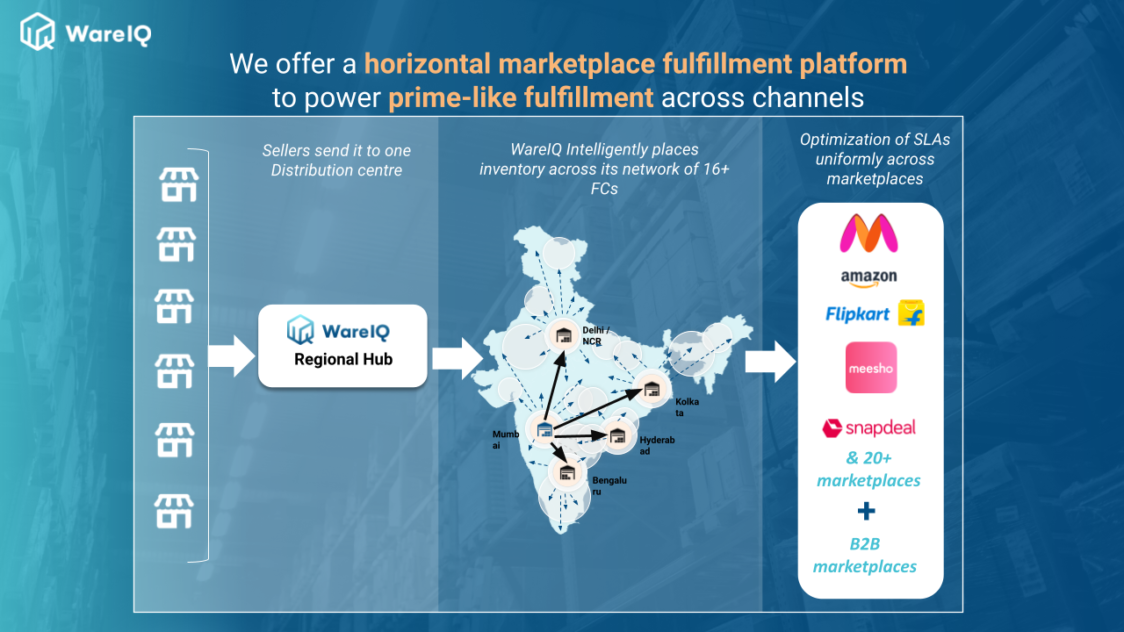What are the Steps to Start to Sell on Snapdeal & Open a Snapdeal Seller Account in 2025?

Snapdeal was originally pioneered as a daily deals platform in 2010 but has since grown to become an eCommerce marketplace that encompasses various services such as multilingual support, a customizable interface, and the use of advanced technology to enable retailers to sell their products on its platform. Currently based in New Delhi, the company has become a major player in the Indian eCommerce selling space which is reflected by more than 500,000 sellers that utilize it to sell a variety of commodities that span across industries and price ranges, giving customers a variety of options.
The majority of the company’s customers are located in smaller towns and villages, rather than conventional metropolitan areas, which has led it to provide coverage to more than 96% of India’s pin codes. In this blog, we will go into detail about why you should sell on Snapdeal, how to become a Snapdeal top seller, the challenges associated with it, and how you can employ WareIQ’s assistance.
Why Should You Sell on Snapdeal?

Mitigates the Need to Set Up a Store
A huge advantage of opting to sell on Snapdeal and most other eCommerce platforms is that the entire retail process from generating interest in a product and converting it to a sale, can be done online without the need of ever setting up a physical store and all the expenses and challenges that are associated with it such as rental costs, interior decorating costs, electricity costs and maintenance costs. This enables retailers to save a ton of money and removes any hassle of needing to run a whole store which makes the entire process more pleasurable and efficient for both the seller and their customers.
Provides Access to More Customers
When retailers opt to sell on Snapdeal and offer their services digitally, they instantly convert their potential customer base from just their local operational area to the entire country. As more of the country’s population gains access to the internet, they will discover the benefits and conveniences of shopping online instead of commuting to a physical store. In addition, Snapdeal provides services to more than 3000 cities and towns in India which means that retailers can receive orders from the opposite end of the country. This increased customer reachability will have a profound impact on sales and will assist retailers in expanding their operations further.
Operates Round the Clock
Companies who sell on Snapdeal are not bound by the restraints that a physical store has to abide by and this includes operational timings. Businesses are always in the position of attaining new customers, even when their staff is asleep or on holiday. Whether a customer is browsing through your online listings on their 9 am commute to work or during a 2 am shopping spree because they can’t get any sleep, your business will stay open to welcome their business, which simply cannot be done through a conventional brick-and-mortar store. Mobile shopping from anywhere has changed the shopping scenario in recent times. This helps in converting even the slightest bit of interest into a potential sale.
Assists in Running the Business On the Go
Due to the digital nature of eCommerce retail, businesses that sell on Snapdeal can take advantage of their staff not needing to be physically present in an office to be productive and keep an eye on ongoing operations, which can be seamlessly done through Snapdeal’s Seller Zone App or Seller Panel. This provides a lot more flexibility by enabling employees to be up to speed on important matters relating to operations, sales or issues faced by customers. This also leads to more time being spent with family or engaging in other personal activities such as physical fitness and being out in nature, which can stimulate personnel to work harder and more efficiently.
Diversifies Your Product Range
Retailers who put their Snapdeal seller accounts to good use can be reassured by the fact that Snapdeal is taking care of important logistical processes such as confirming orders and tackling delivery issues. This enables companies to put more focus on core business activities such as studying the market, enhancing their business strategy, refining existing products, and developing new ones which will ultimately lead to more satisfied customers resulting in improved customer feedback and higher profit margins. By having the freedom to diversify their product portfolio, businesses can tap into new segments of the market and expand their overall reach.
WareIQ, an eCommerce fulfillment company, empowers online brands with a superior-tech platform to compete with Amazon like service levels by bringing their average delivery timelines from 5-10 days to 1-2 days.
6 Simple Steps to Start to Sell on Snapdeal & Register as Snapdeal Seller in 2025
Step 1: Creating a Snapdeal Seller Account
The first thing you need to do is go to https://sellers.snapdeal.com/ where you can create a Snapdeal Seller Account. You will need the following documents to complete the registration for the year 2025:
- Owner’s name
- Company’s name
- Copy of your PAN card
- Canceled cheque from the seller’s payment account
- Copy of your Aadhaar card
- Phone number
- Email ID
- Bank account information
- GST number
- Address proof such as bank statement, electricity bill, passport, etc.
Step 2: Entering Your Business Information
You have to enter your business-related information such as your office address, pick-up pin code, digital signature, name of the business, etc.
Step 3: Verifying Your Email and Phone Number
You need to verify your registered email and phone number by entering the verification code that will be sent to both. This will be used to notify you about orders, tracking information, and other important notifications.
Step 4: Submitting Your KYC Documents
KYC documents such as GSTIN, PAN card, and Aadhar card will be used to verify your ownership or identity of the company. They need to be uploaded to the website.
Step 5: Entering Your Bank Details
You need to enter the relevant bank details as this account will be used to credit payments after a sale is made and also for relevant deductions and expenses.
Step 6: Creating a Product Listing
Once you are done with the registration process, you can list a product using your Snapdeal Seller Account. You should have an idea of what products you want to sell and which category they belong to. There are 2 ways you can list products to sell on Snapdeal.
- Manual Product Listing
- Bulk Product Listing
You can either click on “Create a Single Listing” to list products individually or you can bulk upload by uploading your content. Once your products are successfully listed, you can start to receive orders. You will get a notification every time an order is placed and you can choose to accept or reject it. You can now begin to sell on Snapdeal and utilise all the benefits that come with it.
Challenges Faced by Retailers Who Sell on Snapdeal in 2025
Incurring of Returns Expenses
Sales returns are a major challenge for every seller, regardless of the eCommerce platform. However, some handle it better than others. Retailers who sell on Snapdeal have to deal with 2 types of sales returns – courier returns and buyer returns. Courier returns are when the courier company could not deliver the order due to various circumstances and buyer returns are when the buyer returns the product, which could be due to a variety of reasons, many of which aren’t the sellers’ fault.
Sellers do not incur any expenses for courier returns but for buyer returns, they have to pay for the transport fee for delivery and return as well as the marketing and selling fees. For retailers struggling to maintain their profit margins, this could have dire consequences.
Suggested Read: Why should you sell on myntra?
Lower Profit Margins Compared to Other Platforms
This problem is more pronounced on Snapdeal compared to other eCommerce selling platforms due to the large amounts of local vendors who prefer to use it as opposed to an international platform. This creates severe levels of competition and if businesses do not own a trademark, any and every other company can sell similar products at similar prices. The sheer volume of retailers trying to get into the eCommerce space in India means that by the time operational and logistical expenses and Snapdeals commission are cut, retailers barely have any profit left over.
Quality Control Issues
Snapdeal is one of the worst offenders in this regard. Retailers who sell on Snapdeal constantly face issues such as incorrect titles that are difficult to change, random transferring of shipping plans to Snapdeal Plus with no option to change it back, and retailers using the images and descriptions of other vendors. Dealing with these issues can cause severe time delays and unnecessary hassles for sellers when they could be focusing on other, more important tasks.
Constant Changing of Account Managers
A consistent theme of online selling platforms is the assignment of account managers to sellers who will assist them in tackling any issue or doubt that arises. On most other platforms, a fixed account manager is present, which is beneficial because they will have a deep relationship with the seller and will also have knowledge about prior mishaps that may have occurred.
However, retailers who sell on Snapdeal can have their account managers suddenly change, without any prior notification. This means that when an existing problem isn’t solved or a new problem arises, there will be a new account manager that has no relationship with the seller or prior knowledge about the case which can lead to severe delays in solving it.
Highest Expenses and Commissions
Out of all the major eCommerce marketplaces operating in the country, Snapdeal is one of the most expensive. Retailers who sell on Snapdeal constantly have to pay the most expensive shipping fees, which contain many hidden costs and keep fluctuating.
Snapdeal’s payable amount to retailers, known as seller net payable, is also one of the lowest and leaves sellers with some of the lowest profit margins of any online selling platform. This combined with the fact that there are many features omitted from the platform means that sellers are getting a much lower value compared to similar services.
Suggested Read: Why should you sell on Amazon?
Conclusion
Snapdeal is one of the emerging eCommerce marketplaces in India. Since it is a homegrown company, it inspires many retailers to sell on Snapdeal, in addition to offering a vast amount of coverage to every part of the country. While the platform does have its benefits and drawbacks, it is still a useful platform to sell on as gives retailers more exposure to customers who do not live in big cities but rather, in smaller towns and cities.
Retailers who sell on Snapdeal in conjunction with other platforms are best suited to have the maximum amount of visibility possible. It is always a smart option for sellers to sell on multiple platforms so that they can extend their reach and are not monopolized by a single marketplace. If you need to fulfill orders on Snapdeal or any other eCommerce platform, you can take advantage of WareIQ’s offerings.

WareIQ’s custom WMS offers seamless integrations with more than 20 online selling platforms including Snapdeal, Amazon, Flipkart, and much more. This enables retailers to access all their order information across multiple platforms and inventory details across multiple fulfillment centers, to be easily accessed in one centralised virtual location.
In addition, we also track important metrics about every order to enable companies to forecast future demand and the amount of inventory that they will need. We also provide fulfillment services for retailers who sell on every platform at faster speeds and discounted rates.








